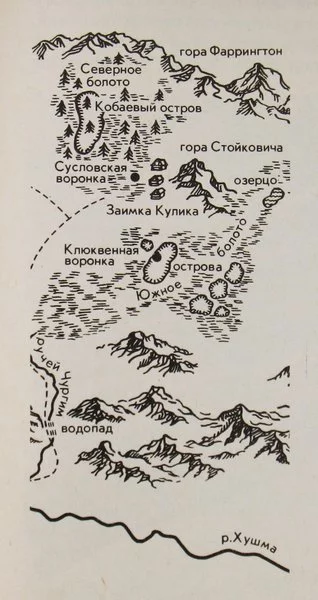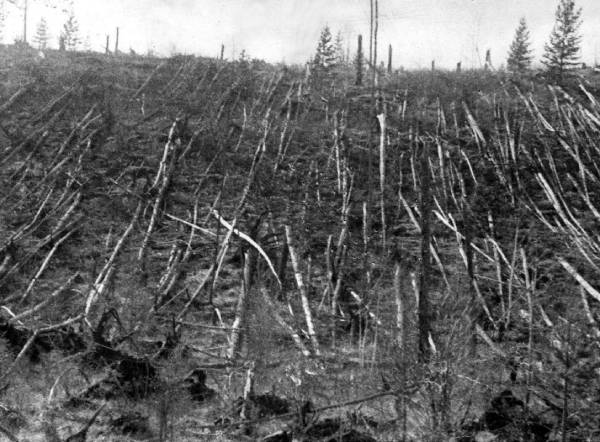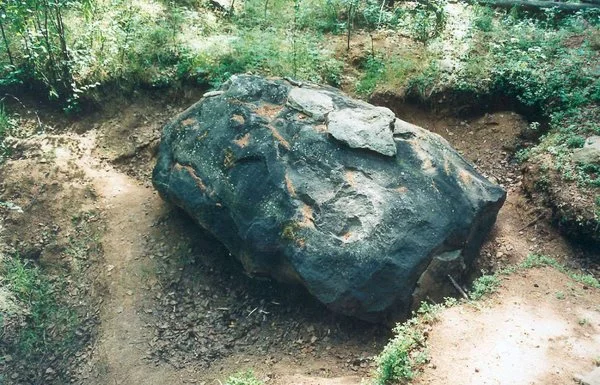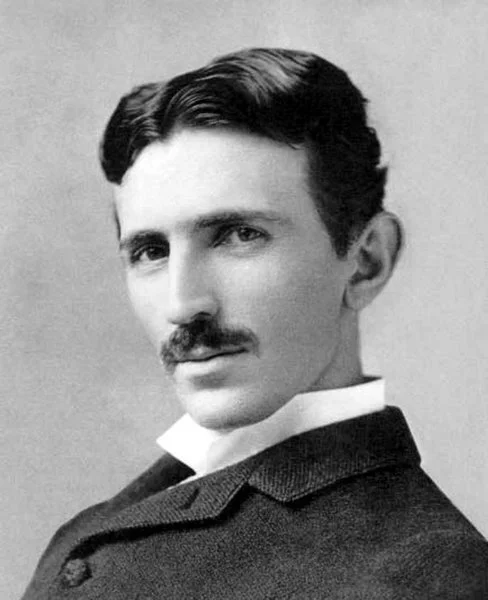Beyond the Tunguska Meteorite: Exploring the Legacy of a Century-old Puzzle
On the morning of June 30, 1908, a fiery body flew over central Siberia, moving in a northerly direction. Its flight was observed in many settlements in the area, thunderous sounds were heard. The shape of the body is described as round, spherical, or cylindrical; the color is red, yellow, or white; there was no smoke trail, but some eyewitness accounts include bright rainbow streaks extending behind the body.
At 7:14 a.m. local time, a body exploded over the Southern Swamp near the Podkamennaya Tunguska River; the force of the explosion, according to some estimates, reached 40-50 megatons of TNT equivalent.

map of the place of the event, magazine "Around the World", 1931
Size
The Tunguska meteorite caused an explosive wave, which knocked down a forest within a radius of about 40 km, destroyed animals, and injured people. Presumably, its size was 30 meters.
Due to the powerful light flash of the Tunguska explosion and the flow of incandescent gases, a forest fire broke out, completing the devastation of the area. On the vast expanse bounded on the east by the Yenisei River, on the south by the line "Tashkent – Stavropol – Sevastopol – northern Italy – Bordeaux", on the west by the Atlantic coast of Europe, unprecedented and completely unusual light phenomena unfolded, which went down in history under the name "bright nights of the summer of 1908".

The clouds formed at an altitude of about 80 km, intensively reflected the sun's rays, thereby creating the effect of bright nights even where they had not been observed before. On the whole of this gigantic territory, on the evening of June 30, the night almost did not come: the entire sky was glowing (you could read a newspaper at midnight without artificial lighting). This phenomenon lasted for several nights.
Weight
Based on the scattering of particles, their concentration, and the estimated power of the explosion, scientists estimated the weight of the space alien in the first approximation. It turned out that the Tunguska meteorite weighed about 5 million tons.
Expeditions
In the history of mankind, according to the scale of the observed phenomena, it is difficult to find a more grandiose and mysterious event than the Tunguska meteorite. The first studies of this phenomenon began only in the 20s of the twentieth century. Four expeditions organized by the USSR Academy of Sciences, headed by mineralogist Leonid Kulik, were sent to the site of the object's fall. However, 100 years later, the mystery of the Tunguska phenomenon remains unsolved.
In 1988, the participants of the research expedition of the Siberian Public Foundation "Tunguska Space Phenomenon" under the leadership of a corresponding member of the Petrovsky Academy of Sciences and Arts (St. Petersburg) Yuri Lavbin found metal rods near Vanavara. Lavbin put forward his own version of what happened – a huge comet was coming from space to our planet.
This became known to some highly developed civilizations of space. The aliens, in order to save the Earth from a global catastrophe, sent their patrol spacecraft. It was supposed to split the comet. But, unfortunately, the attack of the most powerful cosmic body was not quite successful for the ship. However, the comet's core broke into several fragments.
Some of them hit the Earth, and most of them passed by our planet. The Earthlings were saved, but one of the fragments damaged the attacking alien ship, and it made an emergency landing on Earth. Subsequently, the crew of the ship repaired their car and safely left our planet, leaving on it the failed blocks, the remains of which were found by the expedition to the crash site.

Over the years of searching for the wreckage of the Tunguska meteorite, members of various expeditions have found a total of 12 wide conical holes in the disaster area. To what depth they go, no one knows, since no one has even tried to study them. However, recently, researchers for the first time thought about the origin of the holes and the picture of the felling of trees in the area of the cataclysm.
According to all known theories and practices, the fallen trunks should lie in parallel rows. And here they are clearly anti-scientific. This means that the explosion was not a classic one, but something completely unknown to science. All these facts allowed geophysicists to reasonably assume that a thorough study of the conical holes in the earth will shed light on the Siberian mystery. Some scientists have already begun to express the idea of the earthly origin of the phenomenon.
In 2006, according to the president of the Foundation "Tunguska Space Phenomenon" Yuri Lavbin, in the area of the river Podkamennaya Tunguska at the site of the fall of the Tunguska meteorite, Krasnoyarsk researchers found quartz boulders with mysterious writing.

According to the researchers, the strange signs are applied to the surface of quartz in a man-made way, presumably through the influence of plasma. Analyses of quartz boulders, which were studied in Krasnoyarsk and in Moscow, showed that quartz contains impurities of cosmic substances that can not be obtained on Earth. Studies have confirmed that the cobblestones are artifacts: many of them are fused layers of plates, each of which is marked with signs of an unknown alphabet. According to Lavbin's hypothesis, quartz boulders are fragments of an information container sent to our planet by an extraterrestrial civilization and exploded as a result of an unsuccessful landing.
Hypotheses
There were more than a hundred different hypotheses about what happened in the Tunguska taiga: from the explosion of swamp gas to the crash of an alien ship. It was also assumed that an iron or stone meteorite with the inclusion of nickel-iron, an ice core of a comet, an unidentified flying object, a starship, giant ball lightning, a meteorite from Mars, difficult to distinguish from terrestrial rocks, could fall to Earth.
American physicists Albert Jackson and Michael Rian said that the Earth met with a " black hole"; some researchers have suggested that it was a fantastic laser beam or a piece of plasma torn from the Sun; French astronomer, researcher of optical anomalies Felix de Roi suggested that on June 30, the Earth probably collided with a cloud of cosmic dust.
The Iceman cometh
The most recent is the hypothesis of an icy comet, put forward by the physicist Gennady Bybin, who has been studying the Tunguska anomaly for more than 30 years. Bybin believes that the mysterious body was not a stone meteorite, but an icy comet. He came to this conclusion, based on the diaries of the first researcher of the site of the fall of the "meteorite" Leonid Kulik.
At the scene of the accident, Kulik found a substance in the form of ice covered with peat but did not attach much importance to it, as he was looking for something else entirely. However, this compressed ice with combustible gases frozen in it found 20 years after the explosion – is not a sign of permafrost, as was commonly believed, but rather proof that the theory of the ice comet is correct, the researcher believes.
For the comet, which broke up from the collision with our planet into many pieces, the Earth became a kind of hot frying pan. The ice on it was rapidly melting and exploding. Gennady Bybin hopes that his version will be the only true and last.
Meteorite
However, most scientists are inclined to believe that it was still a meteorite that exploded above the Earth's surface. Since 1927, the first Soviet scientific expeditions under the leadership of Leonid Kulik were looking for traces of it in the area of the explosion. But the usual meteor crater was not at the scene. The expeditions found that around the site of the Tunguska meteorite fall, the forest was felled from the center, and in the center, some of the trees remained standing on the root, but without branches.

Subsequent expeditions noticed that the area of the fallen forest has a characteristic butterfly shape, directed from east-southeast to west-northwest. The total area of the fallen forest is about 2,200 square kilometers. Modeling the shape of this area and computer calculations of all the circumstances of the fall showed that the explosion did not occur when the body collided with the earth's surface, but even before that in the air at an altitude of 5-10 km.
Tesla
At the end of the XX-beginning of the XXI century, there was a hypothesis about the connection of Nikola Tesla with the Tunguska meteorite. According to this hypothesis, on the day of the observation of the Tunguska phenomenon (June 30, 1908), Nikola Tesla conducted an experiment on the transfer of energy "through the air".
A few months before the explosion, Tesla claimed to be able to light the way to the North Pole of the expedition of the famous traveler Robert Peary. In addition, there are records in the journal of the Library of Congress that he requested maps of "the least populated parts of Siberia". His experiments on creating standing waves, when, as it is claimed, a powerful electric pulse is concentrated tens of thousands of kilometers away in the Indian Ocean, fit perfectly into this "hypothesis".
If Tesla managed to pump pulse energy of the so-called "ether" (a hypothetical environment, which, according to scientific ideas of the past centuries, was attributed to the role of carrier of the electromagnetic interactions) and resonance effect to "rock" the wave, according to the myth, there must be a discharge, comparable to a nuclear explosion.

Other hypotheses
Writers also gave their own versions of the Tunguska phenomenon. The famous science fiction writer Alexander Kazantsev described the Tunguska phenomenon as a catastrophe of a spaceship flying to us from Mars. Writers Arkady and Boris Strugatsky in the book "Monday begins on Saturday" put forward a humorous hypothesis about countermoves. In it, the events of 1908 are explained by the reverse course of time, i.e., not by the arrival of a spacecraft to Earth, but by its launch.
Date-Author-Hypothesis: The essence of the hypothesis. Problems.
- 1908-Ordinary: The Descent of the God Ogda. The flight of the fire serpent. The repetition of the tragedy of Sodom and Gomorrah Began the 2nd Russian-Japanese War.
- 1908-I. K. Solonina: Huge size aerolite.
- 1921-L. A. Kulik-Meteorite: According to the results of a survey of eyewitnesses, it was concluded that a meteorite fell in the area of Podkamennaya Tunguska.
- 1927-L. A. Kulik-Iron meteorite: Fragments of an iron meteorite associated with the comet Pons–Vinnicke fell out. Problems: Why did the high-altitude explosion occur? Where are the remains of the meteorite? What caused the Western white nights?
- 1927-Transformation of a meteorite: For the first time, they talked about the version of the transformation of a meteorite into a jet of fragments and gas.
- 1929-A meteorite flying on a tangent: The body fell at a small angle to the horizon, without reaching the Ground, split, and experienced a rebound, rising a hundred kilometers up. The fragments, having lost speed, fell out in a completely different place. She explained the absence of physical evidence, white nights, etc., but the calculations did not confirm it.
- 1930-F. While-Comet Core explosion: The Earth collided with a small comet (the comet's core is a "lump of dirty snow"), which completely evaporated in the atmosphere, leaving no trace. Problems: How could a comet have crept up unnoticed? The comet could not have penetrated so deep into the atmosphere.
- 1932-F. de Roi, V. I. Vernadsky-Space objects: The Earth collided with a compact cloud of cosmic dust.
- 1934-Comet: Collision with a comet tail.
- 1946-A. P. Kazantsev-Alien: The explosion of the atomic engines of an alien ship. Problems: No traces of radiation were detected.
- 1948 - L. Lapaz, K. Cowan, W. Libby-Antimatter meteorite: The Tunguska meteorite is a piece of antimatter that has experienced annihilation in the atmosphere, i.e. it has completely turned into radiation due to nuclear processes. Problems: Annihilation should have occurred in the upper atmosphere. Annihilation products (neutrons and gamma quanta) were not found. "The whole universe is real" (Sakharov).
- 1951-V. F. Solyanik-Positively charged iron-nickel meteorite: The meteorite moved with an angle of inclination of 15-20 degrees, at a speed of >10 km/s. Between the surface of the Earth and the flying meteorite, there is an intense mechanical interaction, reaching several million tons. Approaching 15-20 km to the surface of the Earth, the TM began to discharge, producing various mechanical damage.
- 1959-F. Y. Siegel-Alien: The explosion of a meteorite is similar to the destruction of the planet Phaeton, once located between the planets Mars and Jupiter. A UFO exploded at the crash site. As arguments, he cited the increased level of radioactivity in the epicenter of the explosion and the maneuver of the Tunguska body when moving in the atmosphere by almost 90 degrees. Problems: No traces of radiation were detected.
- 1960-G. F. Plekhanov-Biological (comic): Detonation explosion of a cloud of midges with a volume of more than 5 cubic kilometers.
- 1961-Alien-Disintegration of a flying saucer.
- 1962-Meteor-electro-magnetic: On the electric breakdown of the ionosphere caused by a meteor to the Earth.
- 1963-A. P. Nevsky-Electrostatic discharge of a meteorite: According to his calculations, the body with a radius of 50-70 meters moved at a speed of 20 km / s, then discharged at an altitude of about 20 km. it was almost completely destroyed.
- 1963-I. S. Astapovich-Comet ricochet: Due to the gentle trajectory (the angle of inclination is about 10 degrees.) and the minimum height of the flight, which was about 10 km, a small comet, passing through the Earth's atmosphere and causing destruction during braking, lost its shell, and the core went into interplanetary space on a hyperbolic trajectory.
- 1964-G. S. Altshuller, V. N. Zhuravleva-Alien: The explosion was caused by a laser signal that came to Earth from the civilization of the planetary system of the 61st star from the constellation Cygnus.
- 1965-A. N. Strugatsky, B. N. Strugatsky-Alien: An alien ship with a reverse flow of time.
- 1966-Meteorite: The fall of a super-dense piece of white dwarf.
- 1967-V. A. Epifanov-Natural: Due to a local earthquake or geological displacement of the earth's layers, a crack formed in the crust, into which dust, a fine suspension of oil and methane hydrates escaped mixed with "blue fuel" and ignited from lightning.
- 1967-D. Bigby-Alien: Having discovered ten small moons with strange trajectories, I concluded: in 1908, a UFO arrived, a capsule with a crew separated from it and exploded over the taiga, the ship was in earth orbit until 1955, the crew waited and lost altitude, finally, "automatic machines worked", and an explosion occurred.
- 1968-Natural: Dissociation of water and explosion of rattlesnake gas.
- 1969-Comet: The fall of a comet from antimatter. The problem: "the Whole universe is real" (Sakharov).
- 1969-I. T. Zotkin-Meteorite: The radiant of the Tunguska bolide is similar to the radiant of the beta - Taurid daytime meteor shower, which in turn is associated with comet Encke.
- 1973-A. Jackson, M. Rian-Black hole: The Tunguska meteorite was actually a miniature "black hole" of very small mass. In their opinion, it entered the Earth in Central Siberia, passed through, and came out in the North Atlantic.
- 1975-G. I. Petrov, V. P. Stulov-Comet: Only a loose comet nucleus can penetrate so deep into the Earth's atmosphere. The density should not exceed 0.01 g / cm.
- 1976-L. Kresak-Cometnaya: The Tunguska object was actually a fragment of Comet Encke - an old and dim comet with the shortest orbit of all comets moving around the Sun - that broke off from it several thousand years ago.
- 80s-L. A. Mukharev-Natural: A giant ball of lightning exploded, which appeared in the Earth's atmosphere due to a powerful energy pumping by ordinary lightning, or sharp fluctuations in the atmospheric electric field.
- 80s-B. R. Herman-Natural: Lightning generated by cosmic dust invaded the earth's atmosphere at cosmic speed. By its nature, the Tunguska ball lightning belonged to the lightning of the cluster type.
- 80s-V. N. Salnikov-Natural: The explosion is associated with the release of a powerful electromagnetic "vortex" (underground thunderstorm) from the depths of the earth. The natural analog of this phenomenon is ball lightning.
- 80s-A. N. Dmitriev, V. K. Zhuravlev: The Tunguska meteorite is a plasmocide that broke away from the Sun.
- 1981-N. S. Kudryavtseva-Natural: The release of a gas-mud mass from a volcanic tube located near Vanavara.
- 1984-E. K. Iordanishvili-Meteorite: A celestial body flying at a small angle to the surface of our planet was heated at an altitude of 120-130 km, and its long tail was observed by hundreds of people from Lake Baikal to Vanavara. Touching the Ground, the meteorite "ricocheted", jumped several hundred kilometers up, and this allowed us to observe it from the middle current of the Angara. Then the Tunguska meteorite, describing a parabola and losing its cosmic speed, actually fell to Earth, now forever.
- 1984-D. V. Timofeev-Natural gas: Explosion of 0.25-2.5 billion cubic meters of natural gas. A plume of gas, escaping from the bowels of the Earth in the area of the Southern Swamp on June 30, 1908, formed a rattlesnake mixture. It was set on fire by lightning or a fireball.
- 1986-M. N. Tsynbal: Meteorite consisting of metallic hydrogen A block of metallic hydrogen weighing 400,000 tons, instantly sprayed, combined with oxygen, created a large-volume explosive mixture.
- 1988 - A. P. Kazantsev - Alien: Tunguska meteorite – lander separated from starship "Black Prince" - a mysterious companion discovered in earth's orbit California astronomer John Bagby in 1967.
- Nach. 90- M. V. Tolkachev - Comet: Tunguska comet could consist of gas-hydrate compounds instantly released under the effect of sudden changes in temperature.
- Beginning of the 90s-V. G. Polyakov-Meteorite: The meteorite consisted of sodium of cosmic origin. Penetrating into the dense layers of the atmosphere containing water vapor, the meteorite entered into a chemical reaction with it. In the region of critical saturation, a chemical explosion occurred. In
- the early 90s-A. E. Zlobin-Comet: The iron core of a long-period comet that came to us from the Oort cloud had the properties of a superconductor due to its low temperature. This largely determined the conditions of its penetration into the Earth's atmosphere and the unusual nature of the explosion.
- 1991-Natural: An unusual earthquake, accompanied by some light phenomena.
- 1993-K. Chiba, P. Thomas, K. Canli - Comet: a comet Body of nature should be destroyed at a height of 22 km. A small stony asteroid with a diameter of about 30 meters would collapse at an altitude of about 8 km.
- 1993-Meteorite: The fall of an icy meteorite, which, having discharged the electric charge accumulated on its surface, again flew into space.
- 90s-A. Yu. Olkhovatov-Natural: The Tunguska phenomenon was a type of earth earthquake that occurred at the site of a geological fault in the area of the Kulikovo paleovolcano.
- 90s-A. F. Ioffe, E. M. Drobyshevsky-Comet: A chemical explosion of a rattlesnake mixture of oxygen and hydrogen released from comet ice by electrolysis after its repeated passage around the Sun.
- 90s V. P. Evplukhin-Meteorite: The meteorite was an iron ball with a radius of 5 meters and a mass of 4100 tons, surrounded by a silicate shell. Due to braking in the dense layers of the atmosphere, a current was induced in it, then there was sharp heating and sputtering of the substance. The subsequent glow of the atmosphere was caused by the release of a large amount of ionized iron.
- 1995-Meteor: About antimatter entering the Earth's atmosphere.
- 1995 - Meteor: special meteorite with carbonaceous chondriom.
- 1995-A. F. Chernyaev-Ether-gravity bolide: The meteorite did not fall to the Earth, but rather flew out of its depths, turning out to be an ether-gravity bolide. "Average rating car" is a superdense stone block, as if underground meteorite, saturated compressed air.
But these are all just hypotheses, and the mystery of the Tunguska meteorite remains a mystery.
Thousands of researchers are trying to understand what happened on June 30, 1908, in the Siberian taiga. In addition to Russian expeditions, international expeditions are regularly sent to the Tunguska disaster area.
Effects
The Tunguska meteorite turned the vegetation-rich taiga into a graveyard of the dead forest for many years. The study of the consequences of the disaster showed that the energy of the explosion was 10 to 40 megatons of TNT equivalent, which is comparable to the energy of two thousand simultaneously detonated nuclear bombs, similar to the one dropped on Hiroshima in 1945. Later, increased growth of trees was found in the center of the explosion, indicating a radiation release. And this is not all the consequences of the Tunguska meteorite.
About author:
Serg Toporkov Ufologist, Ph.D., blogger, I go on my own expeditions for UFOs. I use scientific methods to investigate the UAP phenomenon. Write to me |
Related tags:
Tunguska meteorite mystery 1908 UFO anomaly asteroid Siberia RussiaRandom UFO or conspiracy article
Encounter with aliens at their base in South America
 In the 1960s, UFO sightings and encounters with aliens, as a growing topic, were highly actual. So the famous businessman Ludwig Pallman, once said that he knew the location of the alien base in South America. In addition, he made contact with its inhabitants.
In the 1960s, UFO sightings and encounters with aliens, as a growing topic, were highly actual. So the famous businessman Ludwig Pallman, once said that he knew the location of the alien base in South America. In addition, he made contact with its inhabitants.
